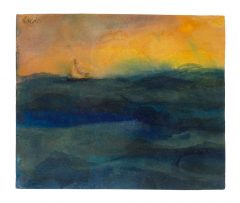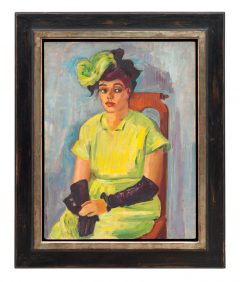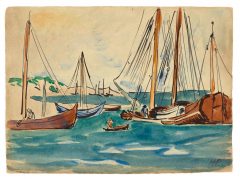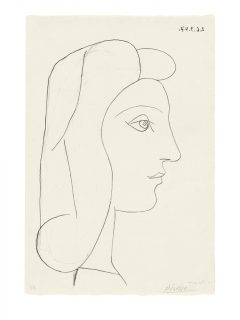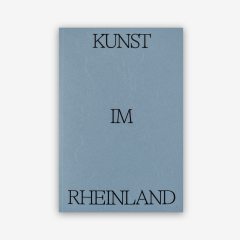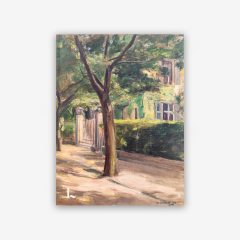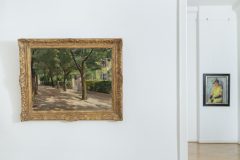Ewald Mataré
Eingekauertes Rind II
1947
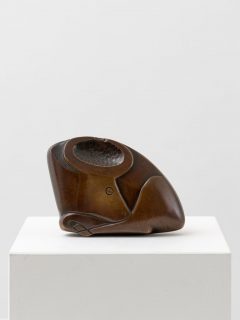
Bronze
15 × 10.3 × 5 cm / 5 7/8 × 4 1/16 × 1 15/16 in
Signed with the initials
Edition of acc. to the Catalogue Raisonné at least 7, several of them estate castings, casting date unknown
Catalogue Raisonné by Schilling 1994 no. 306b
Private Collection Germany (-2014); Galerie Vömel, Dusseldorf (2014); Private Collection Hesse (2014-2022)
- Galerie Ludorff, Neuerwerbungen Frühjahr 2023, Düsseldorf 2023
- Galerie Ludorff, "Kunst im Rheinland", Düsseldorf 2023, S. 28
- Galerie Ludorff, "Neuerwerbungen Frühjahr 2023", Düsseldorf 2023, S. 102
- Sabine Maja Schilling, "Ewald Mataré – Das plastische Werk: Werkverzeichnis", Köln 1994, Nr. 306b
- Gisela Fiedler-Bender, "Ewald Mataré", Pfalzgalerie Kaiserslautern 1981, Nr. 37
- Galerie Alex Vömel (Hg.), "Ewald Mataré. Skulpturen, Holzschnitte, Aquarelle", Ausst.-Kat., Düsseldorf 1975, Nr. 15
Ewald Mataré is one of the best-known German post-war artists of his time. This is not least due to numerous prominent commissions in public spaces, such as the design of the wing doors of Cologne Cathedral (1948-1954), but also to his well-known teachers, Lovis Corinth and Arthur Kampf, with whom he completed his studies as a master student.
After completing his studies between 1914 and 1920, Ewald Mataré worked exclusively as a painter and graphic artist. In the years that followed, he moved closer and closer to sculpture, producing his first woodcuts, and from 1929 he devoted himself exclusively to it. Sculpture means design. Sculpture lives in real space, painting in imagined space, that is its elementary difference, and just as painting should be perceived by the eye, sculpture should be perceived by the hand as something that can be scanned. 1 With this statement, Ewald Mataré documented and manifested the development and basic principles of his subsequent artistic work.
Throughout his life, he devoted himself with great interest to the animal world. In particular, his favourite animal, the cow, became the hallmark and recurring subject of his oeuvre. From a chronological perspective, Mataré belongs to the Expressionists. Stylistically, however, he set himself apart by articulating his works in a clear and pure formal language. At this point, clear parallels can be drawn with the works of his contemporary, Hans Arp. Both use a similar organic formal language, abstracting it in an individual way and thus becoming well-known representatives of organic abstraction. His sculptures are not, as one would originally assume, subject to the usual design principles such as light or shadow. The decisive regularity for him is the feeling hand. Once again, even a blind person can enjoy a sculpture or...it is not a sculpture. 2
Our bronze ‘ Eingekauertes Rind II’ from 1947 also defies classical design principles. It is primarily characterised by its compactness and the integrity of its self-contained body. Mataré hints at the head, horns and front and hind legs of the curled-up animal through fine notches on the flat front. In doing so, he explores the limits of abstraction as far as possible without alienating the animal in its naturalness. The soft and rounded edges of the sculpture are pleasant to the touch, even just by looking at it.
1 Ewald Mataré, ‘Plastik: Graphik’, exhibition catalogue; Lempertz Contempora, p. 14.
2 Ibid.
